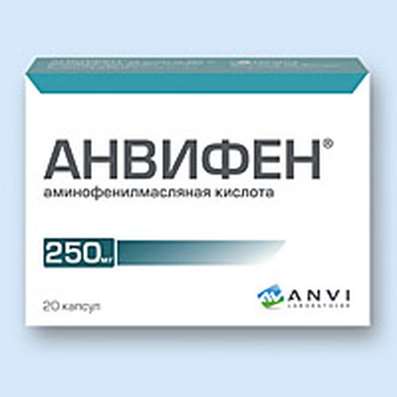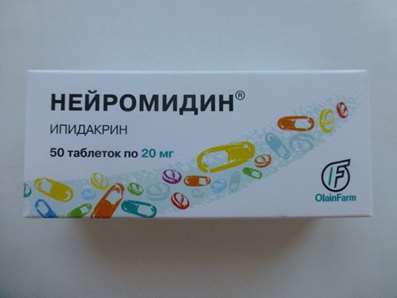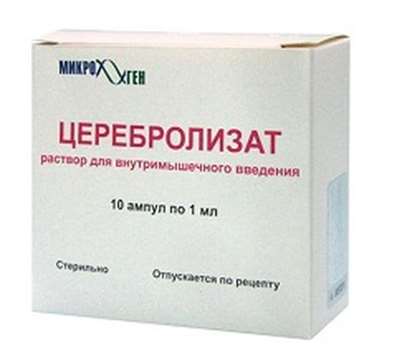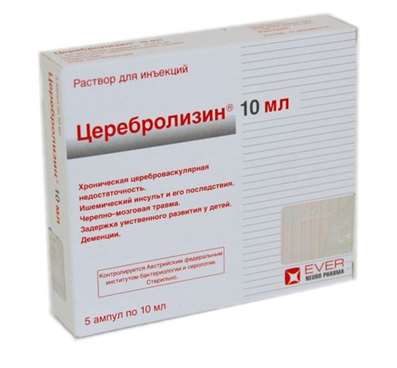Instruction for use: Cetrotid
I want this, give me price
ATX CodeH01CC02 Cetrorelix
Active substance Cetrorelix
Pharmacological group
Gonadotropin-releasing hormone analog [hormones of hypothalamus, pituitary, gonadotropins and their antagonists]
Nosological classification (ICD-10)
Z31.1 Artificial insemination
Fence of egg, ICSI (Intra Cytoplasmic Sperm Injection), Controlled ovarian stimulation, Controlled superovulation, Controlled superovulation in artificial insemination, Treatment of insemination, Fertilization artificial, Premature ovulation, The IVF program, The program of in vitro fertilization, Superovulation
Composition
Lyophilizate for the preparation of a solution for subcutaneous administration 1 vial.
active substance:
Cetrorelix acetate, in terms of cetrorelix 0.25 mg/3 mg
Auxiliary substances: mannitol - 54.8 / 164.4 mg
1 pre-filled syringe with solvent for a dose of 0.25 mg contains: water for injection - 1 ml; For a dose of 3 mg - 3 ml
Description of dosage form
Preparation: powder or mass (in the form of a flat cake) white or almost white.
Solvent: clear, colorless liquid.
pharmachologic effect
The pharmacological action is antigonadotropic.
Pharmacodynamics
Cetrorelix, being an analog of GnRH, binds to the receptors of membranes of pituitary cells and competitively inhibits the binding of endogenous GnRH to these receptors. Cetrorelix dose-dependent inhibits the secretion of gonadotropins by the pituitary: LH and FSH. In the absence of preliminary stimulation, the onset of oppression of the secretory function of the pituitary gland occurs virtually immediately after the administration of the drug, the duration of action of cetrorelix depends on the dose administered. In women, cetrorelix causes a delay in raising the level of LH and, therefore, ovulation. After a single administration of 3 mg of cetrorelix, the drug continues for at least 4 days (on the 4th day after administration, the secretory function is inhibited by 70%). Regular administration of cetrorelix by 0.25 mg every 24 hours maintains the effect of the drug. The effect of cetrorelix is completely reversible after cessation of treatment.
Pharmacokinetics
Absorption and distribution. Quickly absorbed after the injection, the absolute bioavailability is about 85%. Vd is equal to 1.1 l / kg.
Pharmacokinetic parameters after a single injection of 0.25 mg and repeated administration (for 14 days), respectively: Cmax in plasma - 4.17-5.92 ng / ml and 5.18-7.96 ng / ml; Tmax 0.5-1.5 h and 0.5-2 h; AUC was 23.4-42 ng / h / ml and 36.7-54.2 ng / h / ml.
Excretion. T1 / 2 is 2.4-48.8 h and 4.1-179.3 h after a single and multiple (within 14 days) dose of 0.25 mg, respectively. With the introduction of single doses of cetrorelix (from 0.25 to 3 mg), as well as with daily administration for 14 days, the pharmacokinetics of the drug shows a linear relationship. The mean final T1 / 2 after IV and SC administration is 12 and 30 hours, respectively, indicating absorption at the site of administration.
Cetrorelix is excreted by the kidneys. The total plasma and renal clearance is 1.2 ml / min · kg and 0.1 ml / min · kg, respectively. The final T1 / 2 after IV and SC administration is, respectively, an average of about 12 and 30 hours.
The indications of the drug Cetrotid
Prevention of premature ovulation in patients with controlled stimulation of ovulation for the production of eggs and assisted reproductive technologies.
Contraindications
Increased sensitivity to cetrorelix acetate, any other structural analogues of GnRH and other exogenous peptide hormones, mannitol;
Pregnancy and lactation;
Postmenopausal period;
Renal or hepatic insufficiency of moderate or severe degree.
With caution: if there are signs and symptoms of an active allergic process or a predisposition to an allergy in an anamnesis.
pregnancy and lactation
Contraindicated in pregnancy. At the time of treatment should stop breastfeeding.
Side effects
The most frequently observed reactions at the injection site, such as reddening, itching and swelling, are usually mild and passing. In clinical trials, these events were observed at a frequency of 9.4% after multiple injections of Cetrotid at a dose of 0.25 mg.
In the procedure for stimulation of ovulation by gonadotropins, the syndrome of ovarian hyperstimulation (OSS) from mild to moderate degree in WHO classification was relatively common. On its appearance may indicate symptoms such as a feeling of tension and abdominal pain, nausea, vomiting, diarrhea, weight gain, increased ovaries (see "Special instructions"). On the other hand, severe HHV (grade III according to WHO classification) was infrequent (shortness of breath, ascites, hypovolemia, hemoconcentration, electrolyte imbalance, pleural effusion, accumulation of fluid in the pericardial cavity, oliguria, acute respiratory distress, Syndrome and thromboembolic disorders).
Hypersensitivity reactions, including pseudoallergic / anaphylactoid reactions (similar in symptoms with allergic, but without the development of antibodies, and usually manifested to varying degrees in the form of skin redness, heat, urticaria, headache, difficulty breathing) were noted infrequently.
The data on all the undesirable reactions observed with the use of Cetrotid are given below, in accordance with the generally accepted system-organ classification, which, depending on the incidence, are divided into very frequent (≥1 / 10 cases), frequent (≥1 / 100, <1 / 10), infrequent (≥1 / 1000, <1/100), rare (≥1 / 10000, <1/1000) and very rare (<1/10000).
On the part of the immune system: infrequently - a systemic allergic or pseudoallergic reaction, including life-threatening anaphylaxis.
From the nervous system: infrequently - a headache.
From the digestive tract: infrequently - nausea.
From the genitals and the breast: often - easy or moderate HSH (I-II st., According to WHO classification); Infrequently - severe SWC (III grade according to WHO classification).
General disorders and disorders at the injection site: often - reactions at the injection site (redness, swelling, pruritus), usually transient and mild.
Interaction
In vitro studies, a low probability of drug interactions was demonstrated with concomitant administration of Cetrotid with drugs metabolized with cytochrome P450 or undergoing glucuronisation reactions or some other conjugation.
Although there is no evidence of interaction with other widely used drugs, in particular gonadotropins and drugs potentially inducing histamine release in patients with a predisposition to allergy, the likelihood of drug interaction can not be completely ruled out when used with Cetrotid.
It is necessary to inform the attending physician about all medications taken shortly before the beginning of treatment by Cetrotid or taken at the present time.
Dosing and Administration
Cetrotid can be prescribed only by a gynecologist. To achieve maximum effectiveness of treatment with Cetrotid, you should carefully read these recommendations. After the first injection, a patient of 30 minutes should be under the supervision of a doctor to make sure that there is no allergic or pseudo-allergic reaction to the drug administration. All tools and preparations for stopping such a reaction should be available.
Cetrotid 0.25 mg. Contents 1 ôë. (0.25 mg cetrorelix) should be administered 1 time per day every 24 hours in the morning or evening.
Administration of the drug in the morning: Cetrotid treatment should begin on the 5th or 6th day of ovarian stimulation (approximately 96-120 hours after the onset of stimulation) with a gonadotropin drug recombinant or excreted from urine and continue for the entire period of gonadotropin stimulation, including the day The introduction of an ovulatory dose of CG.
Administration of the drug in the evening: Cetrotid treatment should begin on the 5th day of ovarian stimulation (approximately 96-108 hours after the onset of stimulation) with a gonadotropin drug recombinant or excreted from urine and continue for the entire period of gonadotropin stimulation, including the evening preceding administration day Ovulatory dose of HG.
Cetrotid 3 mg. The contents of 1 vial (3 mg of cetrorelix) should be given on the 7th day of ovarian stimulation (approximately 132-144 hours after the onset of stimulation) with a gonadotropin preparation, recombinant or isolated from urine.
After a single administration of 3 mg of cetrorelix, the drug continues for at least 4 days. If on the 5th day after the introduction of Cetrotid 3 mg, the size of the follicles does not allow the induction of ovulation, 0.25 mg of cetrorelix (Cetrotid 0.25 mg) should be additionally administered once a day, beginning 96 hours after the administration of Zetrothid 3 mg and Including the day of administration of the ovulatory dose of HG.
Recommendations for the self-administration of the drug Zetrothid 0.25 mg and 3 mg (information for the patient)
The first injection should be done by a specialist doctor. After receiving appropriate instructions from the doctor about the symptoms that may indicate the occurrence of an allergic reaction, the consequences of such a reaction and the need for its treatment, the patient can independently enter Cetrotid.
Cetrotid injected sc in the lower part of the anterior abdominal wall, preferably in the area around the navel. To avoid local irritation with repeated administration of the drug, the injection site should be changed daily.
Cetrotid should be diluted only in the attached solvent. During the dissolution, the vial should be shaken gently. To avoid the formation of bubbles, do not use vigorous shaking to accelerate the dissolution.
Do not use the solution if it is opaque or contains undissolved particles.
From the vial should be typed in a syringe all its contents. This will allow to enter a dose of cetrorelix no less than 0.23 mg with the use of the drug Cetrotid 0.25 mg and at least 2.82 mg with the use of the drug Cetrotid 3 mg. The solution should be administered immediately after its preparation.
With self-introduction of Cetrotid, the following steps must be taken:
1. Wash your hands. It is very important that the hands and all the necessary devices for injection be clean.
2. On a clean surface, decompose all that is necessary for injection (one vial, one syringe with a solvent, one needle with a yellow marking, one needle with a gray marking and two impregnated sponges).
3. Open the flip cover on the vial. Rub a single tampon with alcohol, an aluminum ring and a rubber stopper.
4. Take the needle with the yellow marking and remove the wrapper from it. Remove the syringe with the solvent from the package. Put the needle on the syringe with the solvent and remove the protective cap from it.
5. Insert the needle into the center of the vial of the vial. Insert the solution from the syringe into the vial slowly pressing the plunger.
6. Without removing the needle from the vial, gently rock the vial until the powder is completely dissolved. Avoid vigorous shaking so that no bubbles form during dissolution.
7. Type the entire contents of the vial into the syringe. If the solution remains in the vial, turn the vial and extend the needle so that its opening is immediately below the stopper. If you look from the side to the inside of the plug, you can control the movement of the needle and fluid. It is very important to fill the contents of the vial with a syringe.
8. Remove the needle from the syringe and put the syringe. Take the needle with the gray marking and remove the wrapper from it. Put the needle on the syringe and remove the protective cap from it.
9. Turn the syringe with the needle upwards and press down on the piston until all air bubbles leave the syringe. Do not touch the needle or allow it to come into contact with any surface.
10. Choose the place of administration of the drug in the lower part of the anterior abdominal wall, preferably in the area around the navel. Take a second swab impregnated with alcohol, and wipe the skin at the site of the intended introduction. Hold the syringe in one hand. With the second hand, gently squeeze the skin surrounding the injection site, and firmly fix it between the fingers.
11. Take the syringe the way you normally hold a pencil, and at a 45 ° angle completely insert the needle into the skin.
12. After completely inserting the needle, stop squeezing the skin.
13. Carefully pull the plunger of the syringe back. If blood appears in the syringe, proceed as described in point 14. If there is no blood, slowly inject the solution, pressing the piston. After the administration of the entire solution, slowly take out the needle and gently press the swab impregnated with alcohol onto the skin at the injection site. Remove the needle from the skin at the same angle at which it was inserted.
14. If blood appears in the syringe, remove the needle from the skin and press it gently with a swab at the point where the needle is inserted. For repeated injection, this solution can not be used, pour the contents of the syringe into the sink. Start all over from point 1.
15. A syringe and a needle can only be used once. Immediately after use, discard them (to prevent injury, wear protective caps on the needle).
Overdose
Overdose of the drug Cetrotid may lead to an increase in the duration of its action, however, this is not accompanied by acute toxicity effects (in case of an overdose, no special measures are required).
special instructions
Cetrotid 0.25 mg is best administered regularly every 24 hours. If you miss a regular injection of the drug, you can inject at any other time during the same day.
Care should be taken when using the drug in the presence of signs and symptoms of an active allergic process or a predisposition to an allergy in an anamnesis; In women with severe allergic conditions, the use of the drug should be avoided, in this connection, it is very important for the patient to inform the attending physician of all the manifestations of allergy present in her.
During or after the stimulation of ovulation, CHD may occur, in which case appropriate therapy is performed. The emergence of OHV is regarded as an inherent risk in the procedure for stimulating ovulation by gonadotropins. For gonadotropin prescribing regimens in combination with GnRH antagonists, a correlation with a shorter period of stimulation was observed, as well as smaller doses of gonadotropins and lower concentrations of estradiol. These observations may indicate a decrease in the risk of the occurrence of an acute hypoglycemic event with the use of GnRH antagonists. OCG can rapidly progress (from days to several days) to a severe condition, so after the administration of HC it is necessary to observe for at least two weeks.
To minimize the risk of CHD, ultrasound and estradiol concentration in the blood plasma are regularly used. In the development of severe HSH, gonadotropin therapy, if it continues, should be discontinued. The patient should be hospitalized and prescribed a specific therapy for CHD. Support for the luteal phase should be carried out in accordance with the generally accepted practice of assisted reproductive technology.
To date, the experience of repeated carrying out of stimulation of ovulation with the use of Cetrotid is limited. Therefore, the drug with repeated courses of treatment should be used after assessing the degree of potential risk and the effectiveness of treatment.
Impact on the ability to manage vehicles and mechanisms. Cetrotid does not affect the ability to drive a car and other mechanical means.
Form of issue
Lyophilizate for the preparation of a solution for subcutaneous administration 0.25 mg, 3 mg. For 0.25 mg or 3 mg of cetrorelix in a vial of colorless clear glass type I (Hebrew F.), sealed with a rubber stopper, sealed on top by an aluminum cap with a detachable plastic cap of the "flip-off" type.
1 ml (for a dosage of 0.25 mg) or 3 ml (for a dosage of 3 mg) of water for injection in a pre-filled glass type I syringe (Hebrew F / F USA), equipped with a piston rod made of polypropylene with rubber Seal and cap of polypropylene. The kit includes: 1 bottle with lyophilizate; 1 pre-filled syringe with solvent; 1 needle (20G) in individual packing made of paper and polymer film; 1 needle (27G) in individual packing made of paper and polymer film; 2 tampons of non-woven fabric impregnated with 70% isopropyl alcohol, in a two-layer package of laminated foil. For 1 or 7 sets in a contour acrylic packaging made of plastic, sealed with a paper lid, together with instructions for use in a pack of cardboard.
Terms of leave from pharmacies
On prescription.
storage Conditions
At a temperature not exceeding 25 ° C.
Keep out of the reach of children.
Shelf life
2 years.
Do not use after the expiry date printed on the package.

 Cart
Cart





